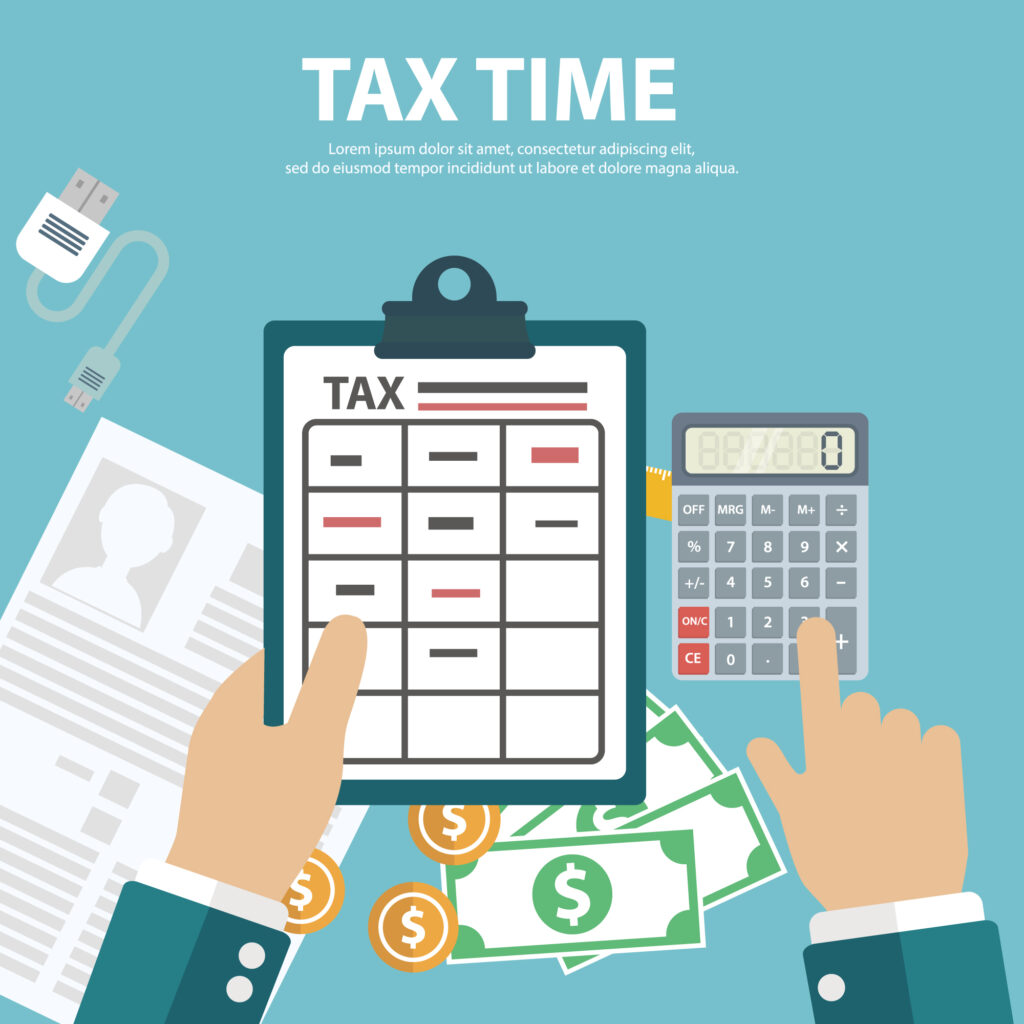On 1 February 2025, the Finance Ministry unveiled sweeping changes in the Union Budget that have redefined personal income taxation. The new tax regime is designed to ease the tax burden on the middle class by lowering tax rates and increasing the exemption threshold. At its core, the reform aims to boost disposable incomes and, consequently, consumer spending while simplifying compliance. In this blog, we delve into the key features of the New Tax Regime 2025, compare it with the old tax system, and illustrate the potential savings for taxpayers with different salary levels.
Key Features of the New Tax Regime 2025
The revised tax structure introduced in Budget 2025 has several notable features:
- Higher Exemption Threshold:
Individuals with an annual income up to ₹12 lakh will pay no tax. For salaried taxpayers, because of the increased standard deduction, the effective tax-free threshold is raised to ₹12.75 lakh. - Revised Tax Slabs:
The new regime introduces more concessional rates with the following slabs:- ₹0 – ₹4 lakh: Nil
- ₹4 – ₹8 lakh: 5%
- ₹8 – ₹12 lakh: 10%
- ₹12 – ₹16 lakh: 15%
- ₹16 – ₹20 lakh: 20%
- ₹20 – ₹24 lakh: 25%
- Above ₹24 lakh: 30%
These slabs are designed to lower tax outgo for most middle-income earners.
- Increase in Standard Deduction:
The standard deduction for salaried individuals has been increased from ₹50,000 to ₹75,000. - Elimination of Most Exemptions and Deductions:
While the old regime allowed taxpayers to claim deductions such as House Rent Allowance (HRA), Leave Travel Allowance (LTA), and various Section 80C investments, the new regime has done away with most of these in favor of lower tax rates. The rationale is to simplify tax filing, although taxpayers who make substantial investments may still prefer the old regime. - Enhanced Rebate Benefits:
The tax rebate available under Section 87A has been increased (from ₹25,000 in earlier years to as high as ₹60,000 in some discussions) so that for incomes within the threshold, the tax liability can be fully offset.
New Tax Regime vs. Old Tax Regime: A Comparative Overview
Taxpayers now have the choice between the new regime and the traditional (old) system. The table below highlights the key differences:
| Feature | Old Tax Regime | New Tax Regime 2025 |
|---|---|---|
| Tax-Free Income | Up to ₹2.5 lakh (plus exemptions/deductions may lower taxable income) | Up to ₹12 lakh (effectively ₹12.75 lakh for salaried individuals after standard deduction) |
| Standard Deduction | ₹50,000 | ₹75,000 |
| Exemptions/Deductions | Various exemptions (HRA, LTA, 80C, etc.) available | Most exemptions/deductions are not allowed (except for standard deduction and a few specified ones) |
| Tax Slabs | 0–₹2.5 lakh: Nil₹2.5–₹5 lakh: 5%₹5–₹10 lakh: 20%Above ₹10 lakh: 30% | ₹0–₹4 lakh: Nil₹4–₹8 lakh: 5%₹8–₹12 lakh: 10%₹12–₹16 lakh: 15%₹16–₹20 lakh: 20%₹20–₹24 lakh: 25%Above ₹24 lakh: 30% |
| Rebate (Section 87A) | Up to ₹25,000 for eligible taxpayers | Enhanced rebate (up to ₹60,000 in some cases) for incomes up to ₹12 lakh, ensuring zero tax liability within the threshold |
| Choice | Favoured by those with significant investments and exemptions | Beneficial for taxpayers who do not claim major exemptions and prefer simplicity |
Note: The actual benefit depends on individual financial circumstances and the value of deductions/exemptions claimed under the old regime.
Detailed Tax Slab Tables
New Tax Regime 2025 Slabs
| Income Range (₹) | Tax Rate |
|---|---|
| 0 – 4,00,000 | Nil |
| 4,00,001 – 8,00,000 | 5% |
| 8,00,001 – 12,00,000 | 10% |
| 12,00,001 – 16,00,000 | 15% |
| 16,00,001 – 20,00,000 | 20% |
| 20,00,001 – 24,00,000 | 25% |
| Above 24,00,000 | 30% |
Old Tax Regime Slabs
| Income Range (₹) | Tax Rate |
|---|---|
| 0 – 2,50,000 | Nil |
| 2,50,001 – 5,00,000 | 5% on income above 2,50,000 |
| 5,00,001 – 10,00,000 | 20% on income above 5,00,000 |
| Above 10,00,000 | 30% on income above 10,00,000 |
Examples of Tax Savings
Below are sample calculations comparing tax liabilities under both regimes for various annual incomes (assuming no additional deductions under the old regime):
Example 1: Annual Income of ₹12.75 Lakh (Salaried Individual)
| Regime | Tax Calculation | Tax Liability (₹) |
|---|---|---|
| New | Income up to ₹12.75 lakh is tax-free (₹12 lakh exemption + ₹75,000 standard deduction) | 0 |
| Old | After standard deductions/exemptions, taxable income could be higher; example liability ≈ ₹1,80,000 | ~1,80,000 |
Savings: Approximately ₹1,80,000 saved under the new regime, assuming basic deductions.
Example 2: Annual Income of ₹15.75 Lakh
| Regime | Tax Calculation (Approx.) | Tax Liability (₹) |
|---|---|---|
| New | Tax computed on ₹15.75 lakh using new slabs ≈ ₹1,05,000 | ~1,05,000 |
| Old | With exemptions, tax liability might be around ≈ ₹2,70,000 | ~2,70,000 |
Savings: Approximately ₹1,65,000 saved under the new regime.
Example 3: Annual Income of ₹25.75 Lakh
| Regime | Tax Calculation (Approx.) | Tax Liability (₹) |
|---|---|---|
| New | Tax computed on ₹25.75 lakh using new slabs ≈ ₹3,30,000 | ~3,30,000 |
| Old | Tax liability under old regime could be around ≈ ₹5,70,000 | ~5,70,000 |
Savings: Approximately ₹2,40,000 saved under the new regime.
Note: The above examples assume that the taxpayer does not claim any exemptions or deductions under the old regime other than the standard deduction. Actual savings will vary based on individual circumstances.
Allowances and Deductions: What’s Changed?
Under the new tax regime, the government has removed many of the exemptions and deductions that were available under the old system. Some of the key changes include:
- House Rent Allowance (HRA):
Previously, taxpayers could claim HRA exemptions if they lived in rented accommodation. Under the new regime, this benefit is not available. - Leave Travel Allowance (LTA):
The exemption for LTA is also removed. - Section 80C Deductions:
Investments in instruments such as Public Provident Fund (PPF), life insurance premiums, and other 80C-eligible investments cannot be claimed under the new regime. - Other Deductions:
Various other exemptions (like those for education loans, home loan interest under Section 24, etc.) are also not permitted, except for the limited deductions that the new regime specifically allows (e.g., the standard deduction of ₹75,000). - Rebate Benefit:
The new regime enhances the rebate benefit (Section 87A) so that individuals with taxable incomes up to ₹12 lakh (after the standard deduction) have zero tax liability. This is a major relief for those who do not benefit from the numerous deductions available under the old regime.
In summary, while the new regime offers lower tax rates and simplified filing, it does so at the cost of popular exemptions and deductions. Taxpayers who already invest in schemes under Section 80C or claim significant HRA benefits might still find the old regime more advantageous.
Below is a detailed comparison—using tables—that explains how various types of income apart from your salary are treated under the New Tax Regime 2025 versus the Old Tax Regime. This includes capital gains, interest income, income from house property (rent), and other miscellaneous incomes. You can add these tables to your write-up for a side-by-side comparison.
Capital Gains (LTCG & STCG)
Key Points:
- Long-Term Capital Gains (LTCG) & Short-Term Capital Gains (STCG):
The treatment for both LTCG and STCG remains unchanged under the new regime. They are taxed as per the relevant provisions of the Income Tax Act regardless of whether you opt for the new or old tax system. - Examples:
- Equity Shares/Equity Mutual Funds: Gains above the exemption threshold (e.g., ₹1 lakh for equity) are taxed at 10% without indexation (if conditions are met) under both regimes.
- Debt Funds/Other Assets: LTCG and STCG on non-equity assets continue to be taxed at the rates prescribed by law.
Table 1. Capital Gains Comparison
| Income Type | Old Tax Regime | New Tax Regime 2025 | Remarks |
|---|---|---|---|
| LTCG (Equity) | Gains above ₹1 lakh taxed at 10% (without indexation) | Same as old regime | No change; exemptions & conditions remain identical |
| STCG (Equity) | Taxed at 15% (if securities transaction tax applies) | Same as old regime | Applicable rules unchanged |
| LTCG (Non-Equity) | Taxed at 20% with indexation (if applicable) | Same as old regime | No regime-specific benefit or change |
| STCG (Non-Equity) | Taxed at normal slab rates or as specified | Same as old regime | Remains unaffected by regime switch |
Interest Income
Key Points:
- Bank Deposits & Savings Account Interest:
Interest earned from bank deposits, savings accounts, fixed deposits, and recurring deposits is fully taxable as “Income from Other Sources” under both regimes. - Other Interest Income:
Interest on non-savings investments (e.g., bonds, debentures) is similarly taxable at the applicable slab rates. - No Special Concessions:
There are no additional concessions for interest income under the new regime compared to the old regime.
Table 2. Interest Income Comparison
| Type of Interest | Old Tax Regime | New Tax Regime 2025 | Remarks |
|---|---|---|---|
| Savings Account Interest | Fully taxable (taxed as per applicable slab) | Fully taxable (same treatment as old regime) | No regime-specific change |
| Fixed Deposit / RD Interest | Fully taxable (added to total income) | Fully taxable (same as old regime) | Treatment identical |
| Other Investment Interest | Taxable as “Income from Other Sources” | Taxable as “Income from Other Sources” | No difference in taxation |
Income from House Property (Rent Collection)
Key Points:
- Computation Remains Unchanged:
Under both regimes, income from house property is computed as follows:- Gross Annual Value (GAV): Determined by the higher of actual rent received or the reasonable expected rent.
- Less Municipal Taxes Paid: Deduct municipal taxes if paid.
- Standard Deduction: A flat 30% deduction is allowed for repairs and maintenance.
- Self-Occupied vs. Let-Out Property:
- For a self-occupied property, no income is assumed (subject to specific conditions) under both regimes.
- For let-out property, the method of computation remains the same.
Table 3. Income from House Property Comparison
| Component | Old Tax Regime | New Tax Regime 2025 | Remarks |
|---|---|---|---|
| Gross Annual Value | Determined based on actual or expected rent | Determined similarly | Calculation method remains unchanged |
| Less Municipal Taxes | Deduct municipal taxes actually paid | Same treatment | Identical treatment |
| Standard Deduction | Flat 30% deduction on (Gross Annual Value – Municipal Taxes) | Flat 30% deduction remains | No regime-specific alteration |
| Net Income (Taxable) | Result after deduction is added to total taxable income | Same computation | No differences between regimes |
Other Types of Income
A. Other Sources (e.g., Winnings, Dividend Income, Royalty)
- Winnings (e.g., from Lottery, Game Shows):
Taxed at special rates under the Income Tax Act (e.g., 30% plus surcharge and cess). - Dividend Income:
Dividend income from domestic companies is taxable in the hands of the shareholder (if applicable); earlier dividend distribution tax has been abolished, but dividends are taxed at applicable slab rates. - Professional and Freelance Income:
Income earned as professional fees is added to total income and taxed as per the respective slabs under both regimes.
Table 4. Other Income Comparison
| Income Category | Old Tax Regime | New Tax Regime 2025 | Remarks |
|---|---|---|---|
| Lottery/Prize Money | Taxed at 30% (plus surcharge and cess) | Taxed at 30% (plus surcharge and cess) | Special rates apply equally under both regimes |
| Dividend Income | Taxable in hands of the shareholder at applicable slab rates | Taxable in hands of the shareholder (same treatment) | No regime-specific change; TDS applicable on dividends |
| Freelance/Professional Fees | Included in total income; taxed as per slab rates | Included in total income; taxed as per slab rates | Treatment remains similar |
Summary of Key Differences for Additional Incomes
| Income Head | Old Regime Treatment | New Regime 2025 Treatment | Overall Impact |
|---|---|---|---|
| Capital Gains (LTCG/STCG) | Taxed as per specific sections (no change) | Taxed as per specific sections (no change) | No change: Both regimes follow existing provisions |
| Interest Income | Fully taxable under “Income from Other Sources” | Fully taxable under “Income from Other Sources” | No change: Interest income is treated identically |
| House Property Income | Computed as: GAV minus municipal taxes & 30% standard deduction | Computed similarly | No change: Same method in both regimes |
| Other Income (Lottery, Dividends, Fees) | Special rates or slab-based tax applied | Special rates or slab-based tax applied | No significant change: Applicable rules remain
consistent |
FAQ
Conclusion
The New Tax Regime 2025 offers lower tax rates and a higher tax-free threshold, primarily benefiting salaried individuals who don’t claim many deductions (like HRA, LTA, or 80C investments). However, its impact on other income sources like capital gains, interest, and rent is minimal. These income types are taxed the same way regardless of which regime you choose.
Essentially, if your income is mainly salary and you don’t utilize many deductions, the new regime could save you money and simplify your taxes. But, if you have significant investments in things like housing, insurance, etc., that generate deductions under the old regime, that option might still be better.
Therefore, it’s crucial to compare both regimes based on your total income (salary plus other sources), investments, and spending habits. Don’t just look at your salary. Carefully calculate your taxes under both systems to see which one is most advantageous.
While the new regime aims to simplify taxes and boost spending, it’s not a one-size-fits-all solution.
Choosing the right regime depends entirely on your individual financial situation. It’s always a good idea to consult a tax professional for personalized advice, as tax calculations can be complex and depend on various factors.
Disclaimer: The tax calculations provided are approximate and are for illustration purposes only. Individual tax liabilities may vary based on additional factors such as other income, specific exemptions, and deductions claimed under the old regime. It is advisable to consult with a tax professional before making any decisions.





